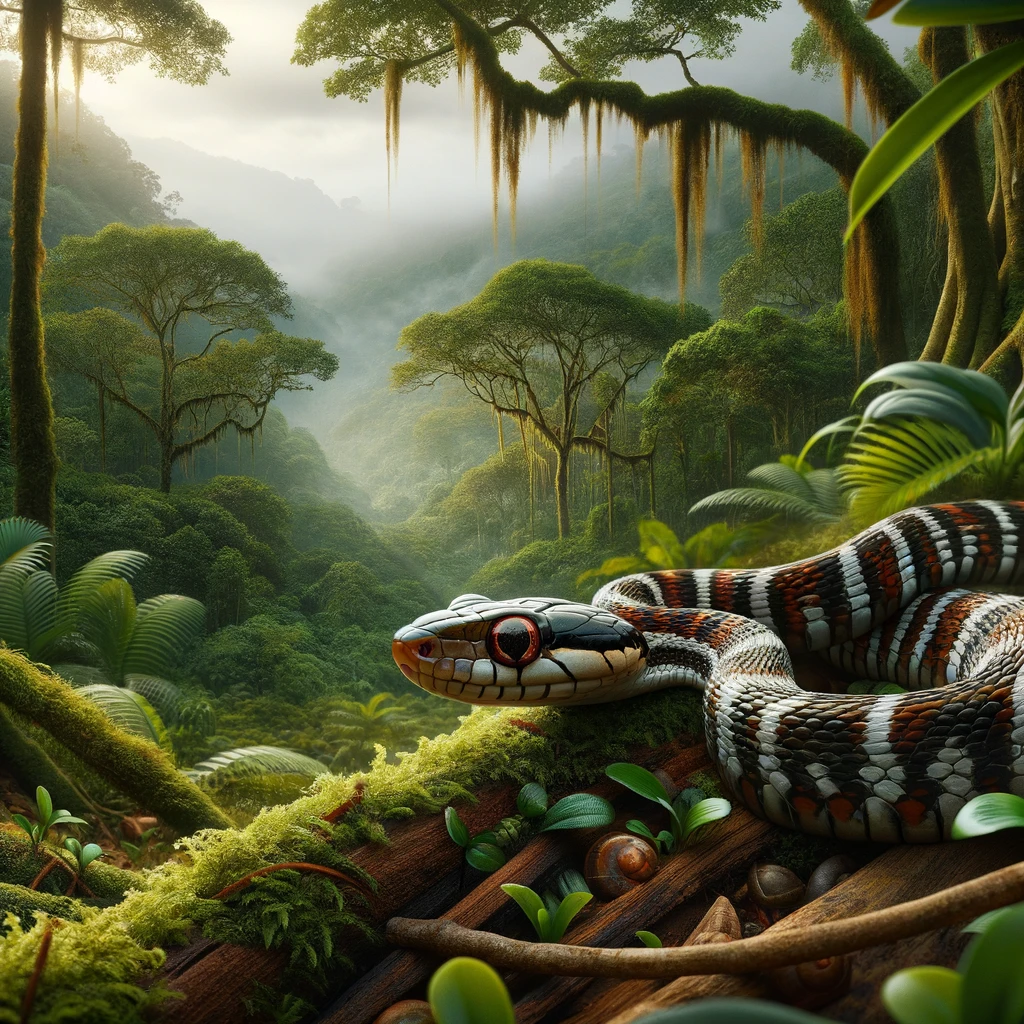In the dense, moisture-laden forests of the Chocó-Darién Gap, straddling the borders of eastern Panama and western Colombia, a remarkable discovery was made in 2023. Scientists unveiled a new species of snake, Sibon irmelindicaprioae, aptly nicknamed DiCaprio’s snail-eating snake. This discovery not only adds to the rich tapestry of biodiversity in one of the world’s most vital ecosystems but also carries a message of conservation, symbolized through its unique naming.
The Discovery
The exploration led by Ecuadorian biologist Alejandro Arteaga and Panamanian biologist Abel Batista culminated in the identification of this nonvenomous snake, belonging to the Dipsadinae subfamily. The snake thrives in the humid, tropical climates of its habitat, skillfully navigating through shrubs, trees, and palm fronds at heights of 200 to 300 cm above the ground. Its discovery is a testament to the relentless pursuit of knowledge and the exploration of the natural world.
Features and Habitat
DiCaprio’s snail-eating snake is characterized by its striking appearance: vibrant brown and white stripes adorn its body, and its eyes gleam with a unique red hue. When threatened, it employs a fascinating defense mechanism by hiding its head and emitting a musky odor to deter predators. This behavior, coupled with its distinct physical attributes, sets it apart from other species in its genus.
The species was found in a region renowned for its biodiversity but threatened by human activities such as gold and copper mining. The naming of the snake after Leonardo DiCaprio and his mother, Irmelin Indenbirken, is a homage to DiCaprio’s extensive environmental activism and efforts towards the conservation of such fragile ecosystems.
Conservation and Legacy
The introduction of Sibon irmelindicaprioae to the scientific community is more than a mere addition to the catalog of species; it serves as a poignant reminder of the delicate balance between nature and human intervention. The Chocó-Darién Gap, a hotspot for biodiversity, faces the looming threat of deforestation and mining, endangering countless species and their habitats.
By naming the snake in honor of a prominent conservationist, the discoverers aim to spotlight the urgent need for environmental preservation and the protection of our planet’s irreplaceable ecosystems. This gesture underscores the critical role of conservation efforts in safeguarding species from the brink of extinction, highlighting the interconnectedness of all life forms.

The discovery of DiCaprio’s snail-eating snake is a beacon of hope and a call to action for conservationists, researchers, and the global community. It underscores the importance of biodiversity, the threats posed by human activities, and the need for concerted efforts to protect our natural world. As we marvel at the beauty and uniqueness of Sibon irmelindicaprioae, let us also commit to the preservation of its home, ensuring that the forests of Panama and Colombia continue to thrive for generations to come.
